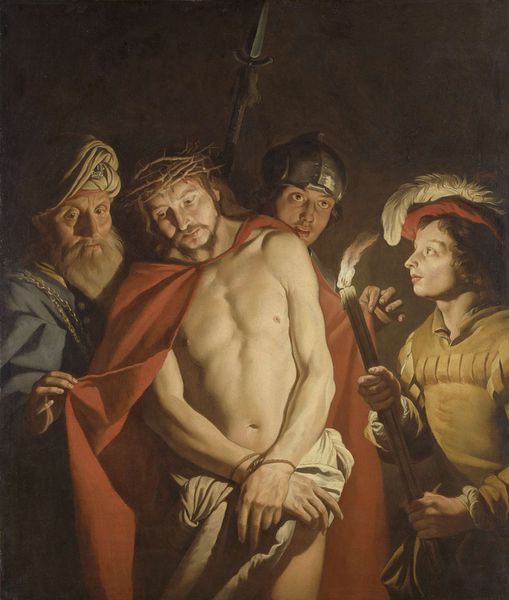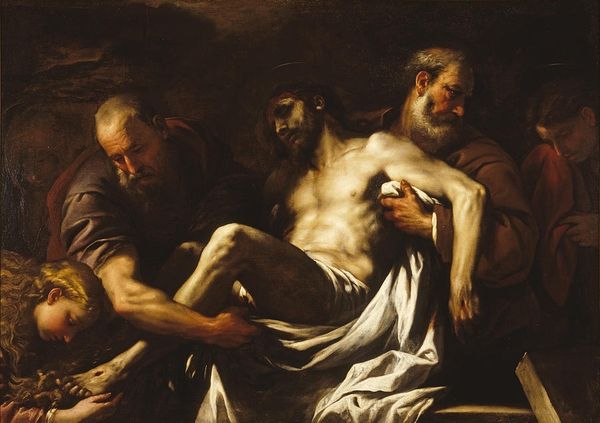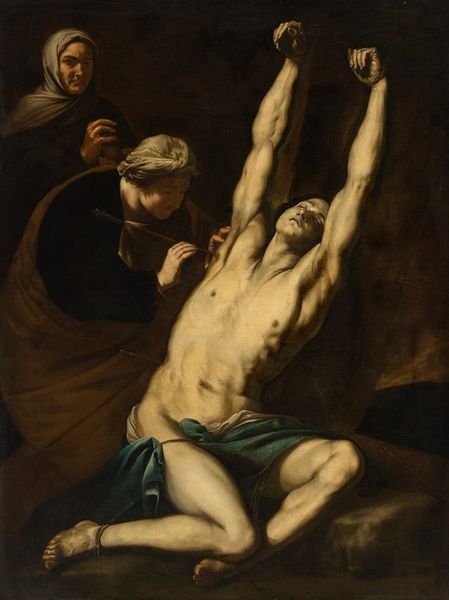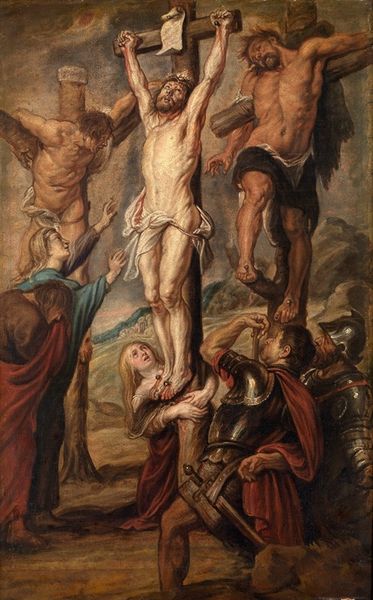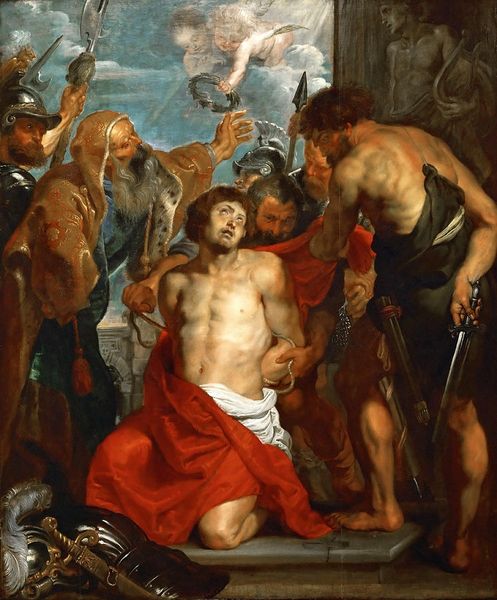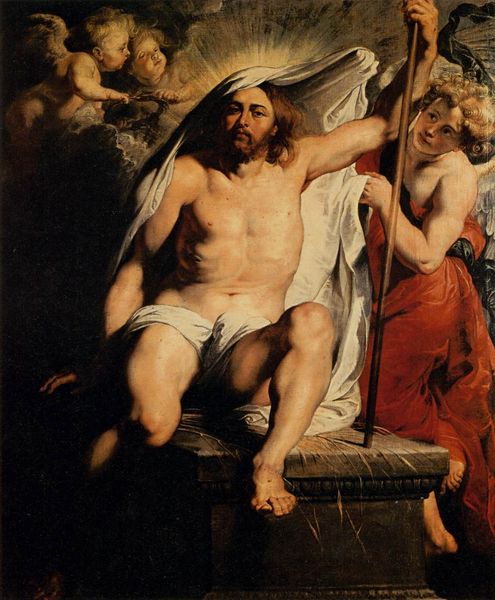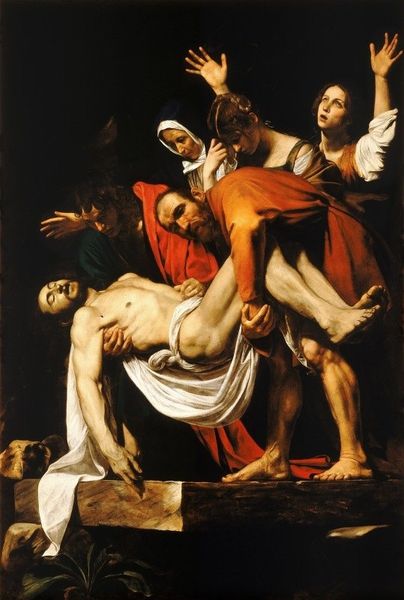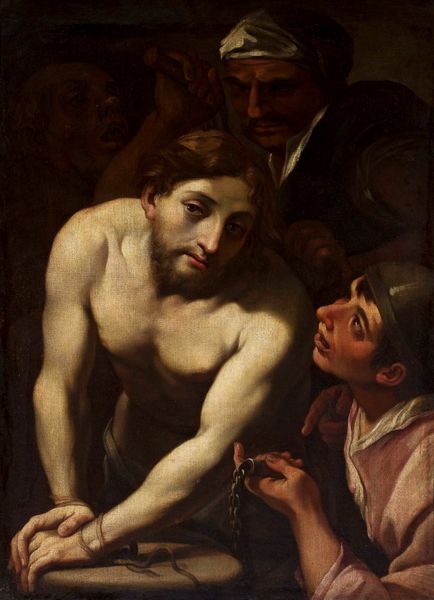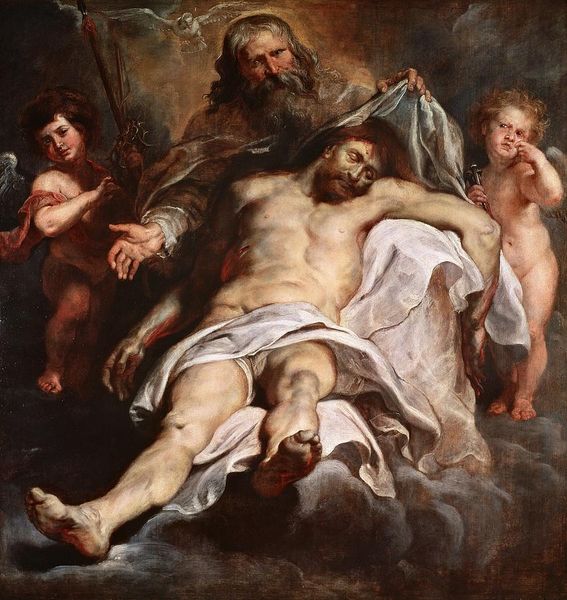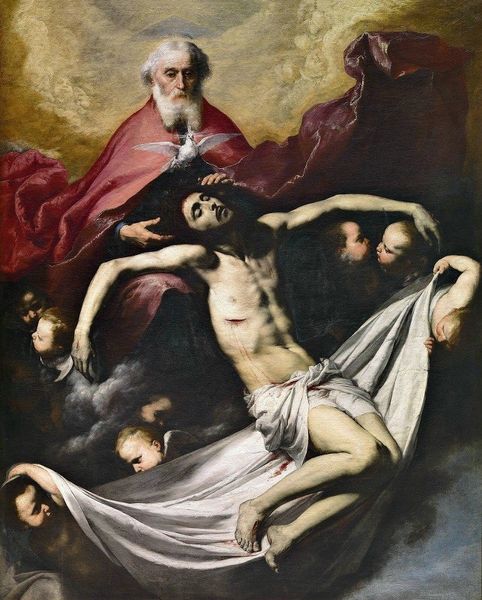
oil-paint
#
allegory
#
baroque
#
oil-paint
#
figuration
#
oil painting
#
mythology
#
history-painting
#
nude
Dimensions: 185 x 154.7 cm
Copyright: Public domain
Curator: Let’s take a look at Peter Paul Rubens’ "The Death of Seneca," an oil painting from around 1615, currently housed in the Bavarian State Painting Collections in Munich. Editor: My initial reaction is a sense of stark drama. The dramatic lighting and almost hyper-realistic portrayal of Seneca's aging body really draw the eye and create an immediate sense of pathos. Curator: Absolutely. Notice how Rubens employs chiaroscuro to enhance the visual weight of Seneca's figure. The highlights and shadows articulate not only his physical form but also the tension inherent in the moment of his forced suicide. We have an old man surrounded by much younger onlookers. It's all very unbalanced, compositionally. Editor: Right, and the very fact that this is Seneca, a major figure of Roman Stoicism being compelled to kill himself speaks to the perils of intellect in times of political repression. Nero condemned him to die simply for potentially plotting against him. What is striking is that Rubens chose to portray this event and memorialize it. What commentary was Rubens looking to make with this subject? Curator: Beyond the immediate political parallels, consider the use of gesture. Seneca's hand, suspended in mid-air, could be interpreted as a signifier of his wavering spirit, an echo of his philosophical teachings, perhaps. Or more likely, just a man's resistance to dying, very humanly drawn in this work. And the details here, as in other Baroque paintings, function as signifiers within the broader narrative. Note the contrast of cool color tones on Seneca's body with the deep oranges and browns of the supporting figures' garments. Editor: It seems, then, that Rubens positions Seneca as a tragic, though complicated, hero standing in contrast to figures of brute authority, caught in a tableau of complex and tragic historical importance. Curator: Precisely. By carefully orchestrating these pictorial elements, Rubens creates a historical narrative imbued with profound psychological weight. Editor: This has been such a complex interpretation and a crucial reflection of art in political commentary! Curator: It’s the painting’s intrinsic visual grammar that allows for that reading.
Comments
No comments
Be the first to comment and join the conversation on the ultimate creative platform.

